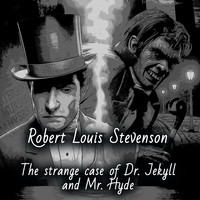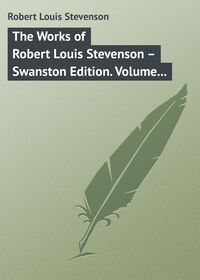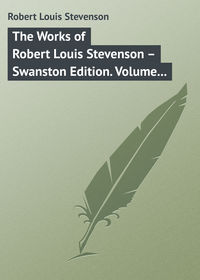 полная версия
полная версияRecords of a Family of Engineers
The deceased had passed along this rope-ladder many hundred times, both by day and night, and the operations in which he was employed being nearly finished, he was about to leave the rock when this melancholy catastrophe took place. The unfortunate loss of Henderson cast a deep gloom upon the minds of all who were at the rock, and it required some management on the part of those who had charge to induce the people to remain patiently at their work; as the weather now became more boisterous, and the nights long, they found their habitation extremely cheerless, while the winds were howling about their ears, and the waves lashing with fury against the beams of their insulated habitation.
[Tuesday, 23rd Oct.]The wind had shifted in the night to N.W., and blew a fresh gale, while the sea broke with violence upon the rock. It was found impossible to land, but the writer, from the boat, hailed Mr. Dove, and directed the ball to be immediately fixed. The necessary preparations were accordingly made, while the vessel made short tacks on the southern side of the rock, in comparatively smooth water. At noon Mr. Dove, assisted by Mr. James Slight, Mr. Robert Selkirk, Mr. James Glen, and Mr. John Gibson, plumber, with considerable difficulty, from the boisterous state of the weather, got the gilded ball screwed on, measuring two feet in diameter, and forming the principal ventilator at the upper extremity of the cupola of the light-room. At Mr. Hamilton’s desire, a salute of seven guns was fired on this occasion, and, all hands being called to the quarter-deck, ‘Stability to the Bell Rock Lighthouse’ was not forgotten.
[Tuesday, 30th Oct.]On reaching the rock it was found that a very heavy sea still ran upon it; but the writer having been disappointed on two former occasions, and, as the erection of the house might now be considered complete, there being nothing wanted externally, excepting some of the storm-shutters for the defence of the windows, he was the more anxious at this time to inspect it. Two well-manned boats were therefore ordered to be in attendance; and, after some difficulty, the wind being at N.N.E., they got safely into the western creek, though not without encountering plentiful sprays. It would have been impossible to have attempted a landing to-day, under any other circumstances than with boats perfectly adapted to the purpose, and with seamen who knew every ledge of the rock, and even the length of the sea-weeds at each particular spot, so as to dip their oars into the water accordingly, and thereby prevent them from getting entangled. But what was of no less consequence to the safety of the party, Captain Wilson, who always steered the boat, had a perfect knowledge of the set of the different waves, while the crew never shifted their eyes from observing his motions, and the strictest silence was preserved by every individual except himself.
On entering the house, the writer had the pleasure to find it in a somewhat habitable condition, the lower apartments being closed in with temporary windows, and fitted with proper storm-shutters. The lowest apartment at the head of the staircase was occupied with water, fuel, and provisions, put up in a temporary way until the house could be furnished with proper utensils. The second, or light-room store, was at present much encumbered with various tools and apparatus for the use of the workmen. The kitchen immediately over this had, as yet, been supplied only with a common ship’s caboose and plate-iron funnel, while the necessary cooking utensils had been taken from the beacon. The bedroom was for the present used as the joiners’ workshop, and the strangers’ room, immediately under the light-room, was occupied by the artificers, the beds being ranged in tiers, as was done in the barrack of the beacon. The light-room, though unprovided with its machinery, being now covered over with the cupola, glazed and painted, had a very complete and cleanly appearance. The balcony was only as yet fitted with a temporary rail, consisting of a few iron stanchions, connected with ropes; and in this state it was necessary to leave it during the winter.
Having gone over the whole of the low-water works on the rock, the beacon, and lighthouse, and being satisfied that only the most untoward accident in the landing of the machinery could prevent the exhibition of the light in the course of the winter, Mr. John Reid, formerly of the floating light, was now put in charge of the lighthouse as principal keeper; Mr. James Slight had charge of the operations of the artificers, while Mr. James Dove and the smiths, having finished the frame of the light-room, left the rock for the present. With these arrangements the writer bade adieu to the works for the season. At eleven a.m. the tide was far advanced; and there being now little or no shelter for the boats at the rock, they had to be pulled through the breach of sea, which came on board in great quantities, and it was with extreme difficulty that they could be kept in the proper direction of the landing-creek. On this occasion he may be permitted to look back with gratitude on the many escapes made in the course of this arduous undertaking, now brought so near to a successful conclusion.
[Monday, 5th Nov.]On Monday, the 5th, the yacht again visited the rock, when Mr. Slight and the artificers returned with her to the workyard, where a number of things were still to prepare connected with the temporary fitting up of the accommodation for the lightkeepers. Mr. John Reid and Peter Fortune were now the only inmates of the house. This was the smallest number of persons hitherto left in the lighthouse. As four lightkeepers were to be the complement, it was intended that three should always be at the rock. Its present inmates, however, could hardly have been better selected for such a situation; Mr. Reid being a person possessed of the strictest notions of duty and habits of regularity from long service on board of a man-of-war, while Mr. Fortune had one of the most happy and contented dispositions imaginable.
[Tuesday, 13th Nov.]From Saturday the 10th till Tuesday the 13th, the wind had been from N.E. blowing a heavy gale; but to-day, the weather having greatly moderated, Captain Taylor, who now commanded the Smeaton, sailed at two o’clock a.m. for the Bell Rock. At five the floating light was hailed and found to be all well. Being a fine moonlight morning, the seamen were changed from the one ship to the other. At eight, the Smeaton being off the rock, the boats were manned, and taking a supply of water, fuel, and other necessaries, landed at the western side, when Mr. Reid and Mr. Fortune were found in good health and spirits.
Mr. Reid stated that during the late gales, particularly on Friday, the 30th, the wind veering from S.E. to N.E., both he and Mr. Fortune sensibly felt the house tremble when particular seas struck, about the time of high-water; the former observing that it was a tremor of that sort which rather tended to convince him that everything about the building was sound, and reminded him of the effect produced when a good log of timber is struck sharply with a mallet; but, with every confidence in the stability of the building, he nevertheless confessed that, in so forlorn a situation, they were not insensible to those emotions which, he emphatically observed, ‘made a man look back upon his former life.’
[1881 Friday, 1st Feb.]The day, long wished for, on which the mariner was to see a light exhibited on the Bell Rock at length arrived. Captain Wilson, as usual, hoisted the float’s lanterns to the topmast on the evening of the 1st of February; but the moment that the light appeared on the rock, the crew, giving three cheers, lowered them, and finally extinguished the lights.
1
An error: Stevensons owned at this date the barony of Dolphingston in Haddingtonshire, Montgrennan in Ayrshire, and several other lesser places.
2
Pitcairn’s Criminal Trials, at large. – [R. L. S.]
3
Fountainhall’s Decisions, vol. i. pp. 56, 132, 186, 204, 368. – [R. L. S.]
4
Ibid. pp. 158, 299. – [R. L. S.]
5
Working farmer: Fr. laboureur.
6
This John Stevenson was not the only ‘witness’ of the name; other Stevensons were actually killed during the persecutions, in the Glen of Trool, on Pentland, etc.; and it is very possible that the author’s own ancestor was one of the mounted party embodied by Muir of Caldwell, only a day too late for Pentland.
7
Wodrow Society’s Select Biographies, vol. ii. – [R. L. S.]
8
Though the districts here named are those in which the name of Stevenson is most common, it is in point of fact far more wide-spread than the text indicates, and occurs from Dumfries and Berwickshire to Aberdeen and Orkney.
9
Mr. J. H. Stevenson is satisfied that these speculations as to a possible Norse, Highland, or French origin are vain. All we know about the engineer family is that it was sprung from a stock of Westland Whigs settled in the latter part of the seventeenth century in the parish of Neilston, as mentioned at the beginning of the next chapter. It may be noted that the Ayrshire parish of Stevenston, the lands of which are said to have received the name in the twelfth century, lies within thirteen miles south-west of this place. The lands of Stevenson in Lanarkshire first mentioned in the next century, in the Ragman Roll, lie within twenty miles east.
10
This is only a probable hypothesis; I have tried to identify my father’s anecdote in my grandfather’s diary, and may very well have been deceived. – [R. L. S.]
11
This is, of course, the tradition commemorated by Southey in his ballad of ‘The Inchcape Bell.’ Whether true or not, it points to the fact that from the infancy of Scottish navigation, the seafaring mind had been fully alive to the perils of this reef. Repeated attempts had been made to mark the place with beacons, but all efforts were unavailing (one such beacon having been carried away within eight days of its erection) until Robert Stevenson conceived and carried out the idea of the stone tower. But the number of vessels actually lost upon the reef was as nothing to those that were cast away in fruitless efforts to avoid it. Placed right in the fairway of two navigations, and one of these the entrance to the only harbour of refuge between the Downs and the Moray Firth, it breathed abroad along the whole coast an atmosphere of terror and perplexity; and no ship sailed that part of the North Sea at night, but what the ears of those on board would be strained to catch the roaring of the seas on the Bell Rock.
12
The particular event which concentrated Mr. Stevenson’s attention on the problem of the Bell Rock was the memorable gale of December 1799, when, among many other vessels, H.M.S. York, a seventy-four-gun ship, went down with all hands on board. Shortly after this disaster Mr. Stevenson made a careful survey, and prepared his models for a stone tower, the idea of which was at first received with pretty general scepticism, Smeaton’s Eddystone tower could not be cited as affording a parallel, for there the rock is not submerged even at high-water, while the problem of the Bell Rock was to build a tower of masonry on a sunken reef far distant from land, covered at every tide to a depth of twelve feet or more, and having thirty-two fathoms’ depth of water within a mile of its eastern edge.
13
The grounds for the rejection of the Bill by the House of Lords in 1802–3 had been that the extent of coast over which dues were proposed to be levied would be too great. Before going to Parliament again, the Board of Northern Lights, desiring to obtain support and corroboration for Mr. Stevenson’s views, consulted first Telford, who was unable to give the matter his attention, and then (on Stevenson’s suggestion) Rennie, who concurred in affirming the practicability of a stone tower, and supported the Bill when it came again before Parliament in 1806. Rennie was afterwards appointed by the Commissioners as advising engineer, whom Stevenson might consult in cases of emergency. It seems certain that the title of chief engineer had in this instance no more meaning than the above. Rennie, in point of fact, proposed certain modifications in Stevenson’s plans, which the latter did not accept; nevertheless Rennie continued to take a kindly interest in the work, and the two engineers remained in friendly correspondence during its progress. The official view taken by the Board as to the quarter in which lay both the merit and the responsibility of the work may be gathered from a minute of the Commissioners at their first meeting held after Stevenson died; in which they record their regret ‘at the death of this zealous, faithful, and able officer, to whom is due the honour of conceiving and executing the Bell Rock Lighthouse.’ The matter is briefly summed up in the Life of Robert Stevenson by his son David Stevenson (A. & C. Black, 1878), and fully discussed, on the basis of official facts and figures, by the same writer in a letter to the Civil Engineers’ and Architects’ Journal, 1862.
14
‘Nothing was said, but I was looked out of countenance,’ he says in a letter.
15
Ill-formed – ugly. – [R. L. S.]
16
This is an incurable illusion of my grandfather’s; he always writes ‘distended’ for ‘extended.’ – [R. L. S.]











